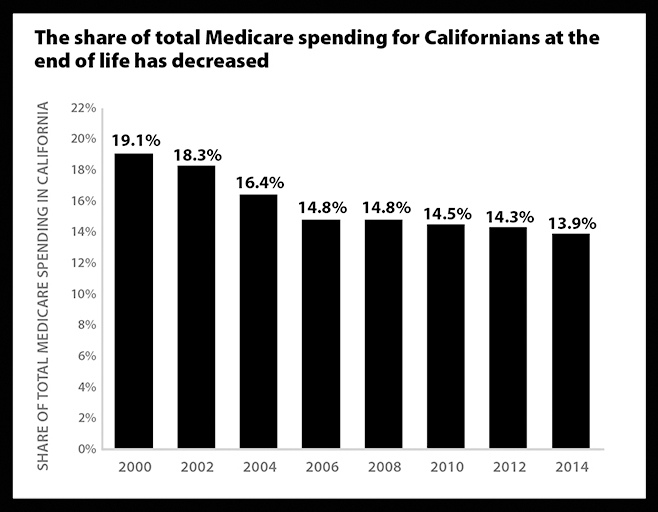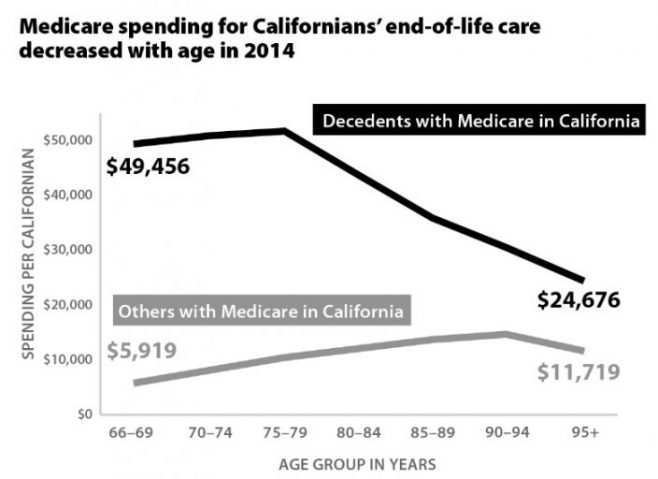
The share of Medicare spending on Californians in their final year of life is steadily declining, according to the Kaiser Family Foundation. The graphic above depicts Medicare spending on patients in California who died at some point during each year. (California Healthline is produced by Kaiser Health News, an editorially independent program of the foundation.)
California mirrors a national trend, according to a recent KFF study. It’s partly explained by the fact that Medicare patients are living longer and older patients tend to spend less on medical care in their final years of life than younger Medicare patients, including a growing contingent of baby boomers. Medicare end-of-life spending begins to decline after 75-79 years of age, as the graph below shows.

Nationally, average Medicare spending by those in their last year of life was 80 percent higher per person in 2014 than in 2000 — up to $34,529 from $19,130. But Medicare spending altogether has outpaced that growth. Spending on people who died during the year has grown at a slower rate than spending on people who lived the entire year, said Juliette Cubanski, an author of the report and associate director of the program on Medicare policy at KFF.
As a result, the share of Medicare spending by those in their final year of life decreased from 18.6 percent in 2000 to 13.5 percent in 2014 nationwide.
To complete the national study, KFF sampled 5 percent of Medicare claims using data from the Centers for Medicare & Medicaid Services Chronic Conditions Data Warehouse. Medicare Advantage spending was excluded because a lack of available data.

